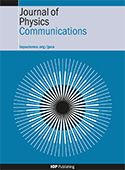
Journal of Physics Communications
Scope & Guideline
Transforming Research into Impactful Insights
Introduction
Aims and Scopes
- Quantum Mechanics and Quantum Information:
The journal features extensive research on quantum mechanics, quantum computing, and quantum information theory, emphasizing advancements in quantum algorithms, entanglement, and measurement theories. - Condensed Matter Physics:
Research in this area includes studies on the properties of materials, phase transitions, and phenomena such as superconductivity and magnetism, often utilizing advanced computational techniques and experimental methods. - Nanotechnology and Materials Science:
The journal publishes papers on the synthesis, characterization, and application of nanomaterials, exploring their unique physical properties and potential applications in various fields, including electronics and biomedicine. - Thermodynamics and Statistical Mechanics:
Contributions in this scope focus on the principles of thermodynamics, statistical mechanics, and their applications in complex systems, including studies on entropy and energy dynamics. - Plasma Physics and Fluid Dynamics:
The journal covers research on plasma dynamics, magnetohydrodynamics, and fluid dynamics, particularly in relation to energy systems and astrophysical phenomena. - Optics and Photonics:
Papers related to the interaction of light with matter, including studies on optical properties, photonic devices, and applications of lasers, are prominently featured in the journal. - Computational Physics and Machine Learning:
The journal encourages the use of computational techniques and machine learning approaches to solve complex physical problems, enhancing predictive modeling and data analysis in physics.
Trending and Emerging
- Quantum Technologies and Quantum Computing:
There is a notable increase in publications related to quantum technologies, including quantum computing, quantum cryptography, and quantum simulations, reflecting the rapid advancements in this area. - Machine Learning Applications in Physics:
The integration of machine learning approaches in physics research is gaining traction, with numerous studies focusing on its applications in data analysis, predictive modeling, and solving complex physical problems. - Advanced Materials and Nanostructures:
Research on new materials, particularly nanostructured materials with unique properties, is on the rise, emphasizing their potential applications in various technological domains, including electronics and energy. - Non-Hermitian Physics and Open Quantum Systems:
An emerging interest in non-Hermitian systems and their applications in quantum mechanics is evident, with a focus on understanding their unique properties and implications for quantum technologies. - Interdisciplinary Research in Physics and Biology:
The intersection of physics with biological systems is trending, with studies exploring biophysics, medical physics, and the application of physical principles to understand biological processes.
Declining or Waning
- Classical Mechanics:
Research in classical mechanics has seen a decrease in publication frequency, likely due to the growing emphasis on quantum mechanics and other modern physics topics that offer more innovative applications. - Thermal Properties of Traditional Materials:
Studies focusing on the thermal properties of conventional materials are becoming less common as the field shifts towards more complex materials and nanostructured systems. - Acoustic Physics:
Research related to traditional acoustic systems and phenomena is waning, possibly as the field moves towards more advanced topics such as plasmonics and optomechanics. - Simple Systems in Theoretical Physics:
The exploration of simple models and systems in theoretical physics appears to be declining, with a shift towards more complex, real-world applications and simulations. - Linear Optics:
Linear optics research is becoming less prevalent, as the focus increasingly shifts to nonlinear optical phenomena and their applications in advanced photonic technologies.
Similar Journals

EUROPEAN PHYSICAL JOURNAL B
Championing High-Quality Research for a Global AudienceEUROPEAN PHYSICAL JOURNAL B (ISSN: 1434-6028, E-ISSN: 1434-6036), published by Springer, is a prominent international journal based in Germany that focuses on the fields of Condensed Matter Physics and Electronic, Optical and Magnetic Materials. With a converged publication timeline from 1998 to 2024, it caters to a diverse audience that includes researchers, professionals, and students striving for the latest advancements in these vital areas of physics. The journal is recognized with a Q3 ranking in both relevant categories for 2023, showcasing its solid yet notable standing within the academic community. Although currently without an H-index, its Scopus rankings reflect a percentile performance of 41st and 39th, respectively, indicating a growing influence among its peers. The journal offers open access options, ensuring that groundbreaking research is widely accessible and contributes to the collective knowledge within the scientific domain. By aiming to publish high-quality, well-researched articles, the EUROPEAN PHYSICAL JOURNAL B plays a crucial role in disseminating innovative findings and fostering collaboration in the field of physics.
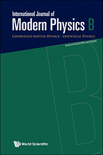
INTERNATIONAL JOURNAL OF MODERN PHYSICS B
Connecting physicists with cutting-edge research and insights.The INTERNATIONAL JOURNAL OF MODERN PHYSICS B, published by WORLD SCIENTIFIC PUBL CO PTE LTD from Singapore, represents a pivotal platform for researchers in the fields of Condensed Matter Physics and Statistical and Nonlinear Physics. With a rich history spanning from 1996 to the present, the journal aims to foster cutting-edge research and innovative theoretical advancements, presenting high-quality peer-reviewed articles that address contemporary challenges in modern physics. Although it operates under a traditional access model, the journal maintains a notable impact, with a commendable ranking within the Scopus metrics – positioning it in the 63rd percentile for Statistical and Nonlinear Physics and the 53rd percentile for Condensed Matter Physics. The Q3 category ranking further underscores its relevance and growing stature in the scientific community. This journal is essential for physicists, researchers, and students seeking to keep abreast of the latest developments and theoretical insights in these dynamic areas of study.
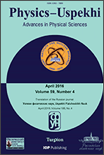
PHYSICS-USPEKHI
Navigating the Cosmos of Physics and AstronomyPHYSICS-USPEKHI, published by Uspekhi Fizicheskikh Nauk, is a prominent peer-reviewed journal in the field of physics and astronomy, reaching researchers and professionals since its inception in 1993. With an ISSN of 1063-7869 and an E-ISSN of 1468-4780, this esteemed journal has been classified as Q2 in the Physics and Astronomy category based on the 2023 quartiles, ranking 74 out of 243 journals in its Scopus classification, placing it in the 69th percentile. Although currently not an open access journal, it provides invaluable insights and advancements in the field, fostering an environment for scholarly exchange and collaborative research. Based in Moscow, Russia, PHYSICS-USPEKHI continues to shape the landscape of theoretical and experimental physics, inviting submissions that contribute to its rich legacy of high-impact scientific discourse.
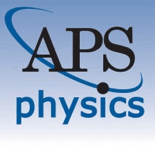
PHYSICAL REVIEW B
Charting New Territories in Physics and Materials SciencePHYSICAL REVIEW B, published by the American Physical Society, is a leading journal in the field of condensed matter physics and materials science, particularly focusing on electronic, optical, and magnetic materials. With an ISSN of 2469-9950 and an E-ISSN of 2469-9969, this periodical has garnered a prestigious reputation, achieving a Q1 ranking in both relevant categories as of 2023. The journal has recorded significant impact as reflected in its Scopus ranks, notably positioned at #95 out of 434 in Condensed Matter Physics and #75 out of 284 in the Materials Science sector, illustrating its importance in advancing research and discussions in these critical areas. Although it does not offer open access, PHYSICAL REVIEW B remains an invaluable resource for academics, researchers, and professionals seeking to increase their understanding of contemporary issues in condensed matter and material sciences. Established in 2005, this journal continues to foster innovation and dissemination of knowledge, making it a cornerstone publication for those engaged in cutting-edge research.

PHYSICAL REVIEW LETTERS
Highlighting the Essence of Physics InnovationPhysical Review Letters, published by the American Physical Society, is a premier journal in the field of Physics and Astronomy renowned for its rapid dissemination of high-impact research findings. With a distinguished history dating back to 1958 and an impressive ranking of #13 out of 243 in the general physics category, it stands proudly within the Q1 quartile, placing it in the top 6% of journals in its field. The journal focuses on brief reports of significant fundamental research across all areas of physics, making it an essential resource for researchers, professionals, and students seeking to stay at the forefront of developments in their field. Although Physical Review Letters does not offer open access options, its rigorous peer-review process ensures a high standard of quality and relevance in its published articles. With an unwavering commitment to advancing the understanding of physical science, this journal is indispensable for those looking to make a genuine impact in their research endeavors.
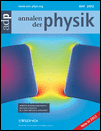
ANNALEN DER PHYSIK
A Legacy of Excellence in Scientific DiscourseANNALEN DER PHYSIK, a prestigious journal published by WILEY-V C H VERLAG GMBH, stands as a cornerstone of the field of physics and astronomy since its inception in 1799. With an ISSN of 0003-3804 and an E-ISSN of 1521-3889, this journal provides a platform for innovative research and critical discourse across various domains of physics. Annalen der Physik is currently ranked in the Q2 category for general physics and astronomy, occupying rank #76 out of 243 in Scopus, placing it within the 68th percentile. This indicates its significant impact and the quality of research it publishes. Although the journal does not offer Open Access options, its robust historical lineage and ongoing contributions ensure that it continues to be an essential resource for researchers, professionals, and students alike. For those seeking to stay at the forefront of contemporary physics research, ANNALEN DER PHYSIK represents a vital source of knowledge, innovation, and scholarly communication.
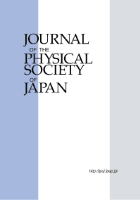
JOURNAL OF THE PHYSICAL SOCIETY OF JAPAN
Advancing the Frontiers of Physics and AstronomyThe JOURNAL OF THE PHYSICAL SOCIETY OF JAPAN, published by the Physical Society of Japan, has been at the forefront of advancing knowledge in the field of Physics and Astronomy since its inception in 1946. With a commendable reputation reflected in its Q2 ranking within its category for 2023, this journal serves as a vital platform for disseminating high-quality research and innovative concepts. Researchers and professionals alike can engage with cutting-edge studies and reviews that span a diverse range of topics pivotal to the physical sciences. Although the journal does not currently operate with an open access model, it maintains a robust impact on the global physics community, evidenced by its placement in the 59th percentile among a competitive pool of 243 journals. With an unwavering commitment to bridging theory and application, the JOURNAL OF THE PHYSICAL SOCIETY OF JAPAN continues to inspire and cultivate scholarly discourse and collaboration across disciplines.

EUROPEAN PHYSICAL JOURNAL D
Advancing the Frontiers of Atomic and Molecular PhysicsEUROPEAN PHYSICAL JOURNAL D, published by SPRINGER, stands as a pivotal resource in the field of Atomic and Molecular Physics, and Optics. With an ISSN of 1434-6060 and an E-ISSN of 1434-6079, this journal has established itself as a platform for high-quality, peer-reviewed research, catering to a diverse audience of researchers, professionals, and students. Notably, the journal is classified in the Q3 quartile for 2023, reflecting a respectable standing within its category, ranked #123 out of 224 in Scopus, with a 45th percentile. Covering a wide range of topics through contributions that span from 1998 to 2024, the journal encourages the dissemination of innovative ideas and groundbreaking studies in the rapidly evolving domain of atomic and molecular science. By offering open access publication options, EUROPEAN PHYSICAL JOURNAL D enhances the reach and impact of its authors' work, ultimately fostering a greater understanding of complex physical phenomena.
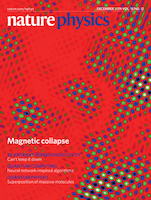
Nature Physics
Discovering the Dynamics of Nature Through PhysicsNature Physics is a premier journal dedicated to publishing high-impact research in the realm of physics, brought to you by the esteemed NATURE PORTFOLIO. With its ISSN 1745-2473 and E-ISSN 1745-2481, this journal has established itself as a vital resource for the physics community, enjoying a remarkable Q1 quartile ranking in the Physics and Astronomy category for 2023 and securing an impressive Rank #5/243 and a 98th percentile ranking in Scopus. Since its inception in 2005, Nature Physics has become a catalyst for innovation, featuring cutting-edge research that encompasses a broad spectrum of physics disciplines. Although it operates under traditional subscription models, it maintains a commitment to accessibility through selective publications and editorial excellence. Positioned in Berlin, Germany, this journal is a must-read for researchers, professionals, and students who seek to stay at the forefront of advancements in physics.
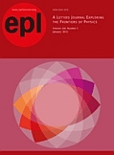
EPL
Exploring New Horizons in Scientific ResearchEPL, a prominent journal published by IOP Publishing Ltd, stands at the forefront of the field of Physics and Astronomy. With a history of impactful contributions stretching from 1986 to 2024, EPL serves as a dynamic platform for researchers to disseminate their pioneering findings and innovative ideas. The journal, with a current category ranking of Q2 among its peers and a competitive Scopus rank of #101 out of 243 in the general physics and astronomy category, reflects its substantial reputation and contribution to the scientific community. Although it operates under a traditional subscription model, EPL's reach is extensive, enabling access to a diverse readership that includes academicians, industry professionals, and students alike. By fostering interdisciplinary collaboration and promoting rigorous research, EPL continues to play a vital role in shaping the future of physics and astronomy.